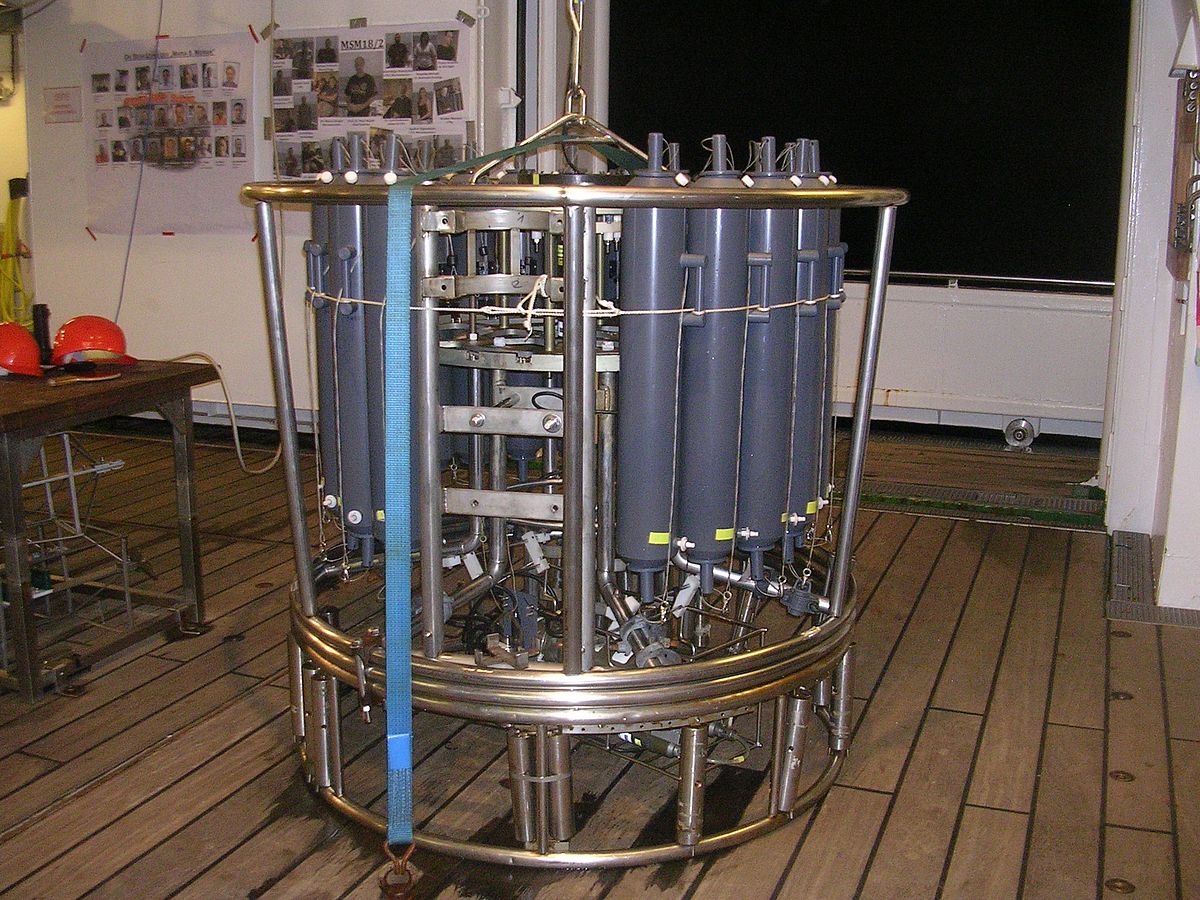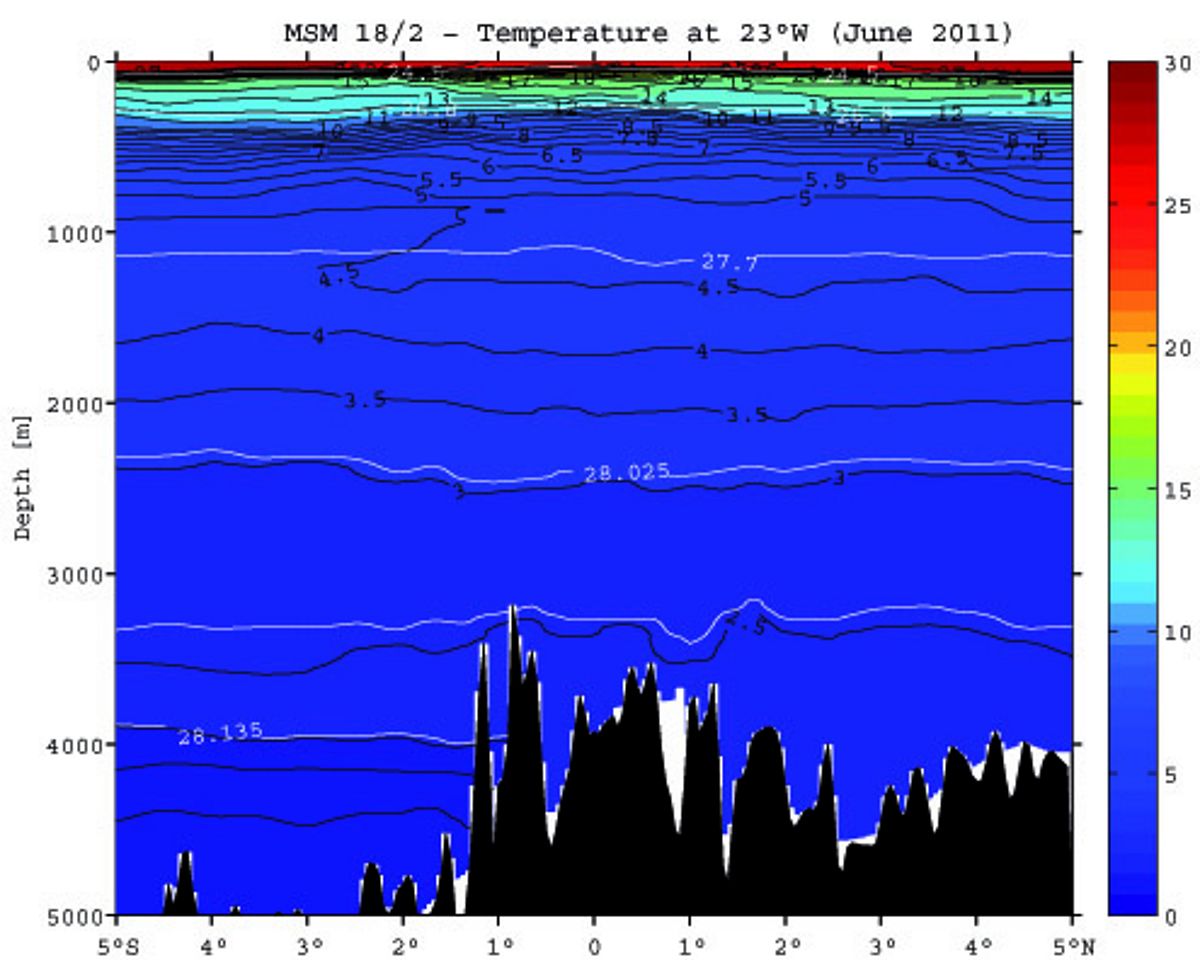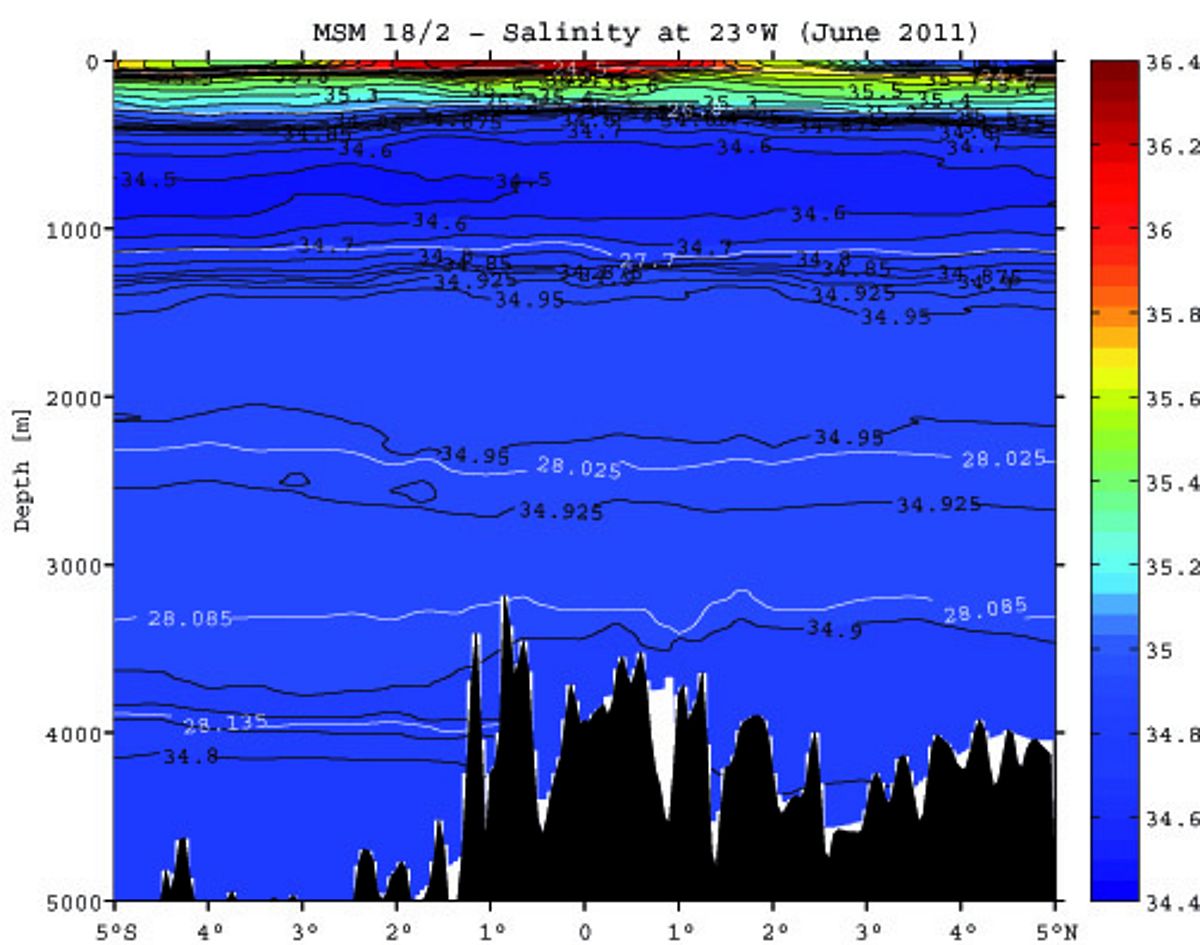Even during the early cruises of the first “Meteor” in the South Atlantic during the 1920s, profiles of temperature and salinity were taken from the surface all the way down to the ocean floor, several thousand meters deep. Those measurements, tedious and time-consuming using buckets and reversing thermometers, are accomplished today by a continuously recording CTD probe. It measures Conductivity, Temperature and Depth, which in turn are used to determine the salinity of the seawater. Typically, the respective sensors are mounted inside a stainless steel cage which also holds a number of water samplers, the so-called rosette. The entire package is lowered from the ship on a conducting wire which transmits the respective signals back to the onboard laboratory. Such a hydrographic station in 5000 m of water may still take several hours, despite the advances in technology. Temperature, salinity and pressure are necessary to determine the density field of the ocean, and the density – along with other parameters – allows the analysis of watermasses, their origin and movement. Another important parameter measured by the CTD package is oxygen, with its significance for marine life underlined by the extensive Oxygen Minimum Zones (OMZ) of the world ocean.





